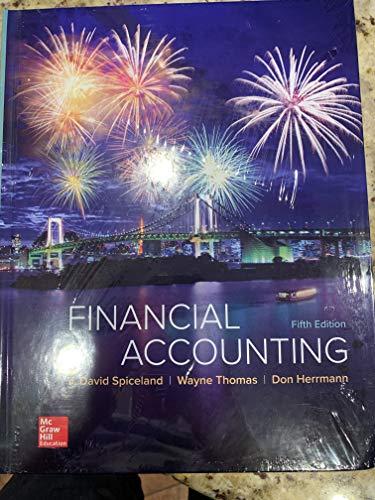
1.
Calculate S company’s return on assets, profit margin and asset turnover.
1.
Explanation of Solution
Rate of return on the total assets is the ratio of the net income, and interest expense to the average total assets. The rate of return on total assets measures the efficiency of the business. It measures how efficiently the business is using its total assets in generating the income.
The rate of return on the total assets is calculated as follows:
Determine the return on assets ratio:
The return on assets ratio is determined as follows:
Working note:
Determine the average total assets:
Hence, the return on asset ratio is 27.1%.
Determine the profit margin ratio:
The profit margin ratio is determined as follows:
Hence, the profit margin ratio is 24%.
Determine the asset turnover ratio:
The asset turnover ratio is determined as follows:
Hence, the asset turnover ratio is 1.1 times.
2.
Calculate P Company’s return on assets, profit margin and asset turnover ratio:
2.
Explanation of Solution
Determine the return on assets ratio:
The return on assets ratio is determined as follows:
Working note:
Determine the average total assets:
Hence, the return on asset ratio is 8.40%.
Determine the profit margin ratio:
The profit margin ratio is determined as follows:
Hence, the profit margin ratio is 5.62%.
Determine the asset turnover ratio:
Determine the asset turnover ratio is determined as follows:
Hence, the asset turnover ratio is 1.50 Times.
3.
Comment on the ratios.
3.
Explanation of Solution
- Company S has higher profit margin when compared to Company P.
- Company P has higher asset turnover when compared to Company S.
- Company S produces innovative products. Hence it has higher profit margins. Company
P emphasizes high sales turnover as it has competitive pricing strategies.
Want to see more full solutions like this?
Chapter 7 Solutions
Financial Accounting
- Quentin sells a parcel of land for $80,000 cash, and the buyer assumes Quentin's liability of $12,000 on the land. Quentin's basis in the land is $65,000. What is the gain or loss he will recognize on the sale? A. $3,000 loss B. $15,000 gain C. $27,000 gain D. $37,000 gainarrow_forwardVelocity Industries used 9,200 machine hours (Driver) on Job #45. Total machine hours are 28,000. Assume Job #45 is the only job sold during the accounting period. If the total overhead applied is $196,000, what is the overhead applied in COGS?arrow_forwardTony sold a building to Carol. The sales price was $420,000. Tony paid a commission to a real estate broker of $22,000 and paid other selling expenses of $5,800. Tony's basis in the building was $285,000. What was Tony's gain realized on the sale of the building?arrow_forward
- Lila Corporation reported net sales of $80,000. The beginning accounts receivable was $15,000, and the ending accounts receivable was $21,000. What is the days sales collected for Lila Corporation? (Rounded answer to nearest day)arrow_forwardEleanor Technology, a firm with no net debt, reports cash flow from operations of $7,840 million in its cash flow statement after adding $2,250 million in accruals to earnings. It reported cash investments in operations of $4,680 million. What were Eleanor Technology's free cash flow and earnings for the period? Help me with thisarrow_forwardKaiser Industries earned an operating income of $35,500 with a contribution margin ratio of 0.40. Actual revenue was $320,000. Calculate the total fixed cost. Round your answer to the nearest dollar, if required.arrow_forward
- Provide correct option accounting questionarrow_forwardA business has revenue of $895,000, cost of goods sold of $356,000, operating expenses of $198,000, and pays $82,000 in taxes, what is the net income?arrow_forwardZeta Corporation began the accounting period with $90,000 of merchandise, and the net cost of purchases was $310,000. A physical inventory showed $110,000 of merchandise unsold at the end of the period. The cost of goods sold by Zeta Corporation for the period is ____.arrow_forward
- I am searching for the accurate solution to this accounting problem with the right approach.arrow_forwardHow does triple bottom line reporting enhance traditional financial statements? (a) It deals exclusively with social impacts (b) It only focuses on environmental costs (c) It measures profit, people, and planet impacts simultaneously (d) It reports financial profits three ways MCQarrow_forwardConsider the overall effects on Peninsula Lawn Care from selling and performing services on account for $9,200 and paying expenses totaling $5,850. What is Peninsula Lawn Care's net income or net loss? A. Net loss of $3,650 B. Net income of $4,650 C. Net income of $7,800 D. Net income of $3,350 helparrow_forward

 AccountingAccountingISBN:9781337272094Author:WARREN, Carl S., Reeve, James M., Duchac, Jonathan E.Publisher:Cengage Learning,
AccountingAccountingISBN:9781337272094Author:WARREN, Carl S., Reeve, James M., Duchac, Jonathan E.Publisher:Cengage Learning, Accounting Information SystemsAccountingISBN:9781337619202Author:Hall, James A.Publisher:Cengage Learning,
Accounting Information SystemsAccountingISBN:9781337619202Author:Hall, James A.Publisher:Cengage Learning, Horngren's Cost Accounting: A Managerial Emphasis...AccountingISBN:9780134475585Author:Srikant M. Datar, Madhav V. RajanPublisher:PEARSON
Horngren's Cost Accounting: A Managerial Emphasis...AccountingISBN:9780134475585Author:Srikant M. Datar, Madhav V. RajanPublisher:PEARSON Intermediate AccountingAccountingISBN:9781259722660Author:J. David Spiceland, Mark W. Nelson, Wayne M ThomasPublisher:McGraw-Hill Education
Intermediate AccountingAccountingISBN:9781259722660Author:J. David Spiceland, Mark W. Nelson, Wayne M ThomasPublisher:McGraw-Hill Education Financial and Managerial AccountingAccountingISBN:9781259726705Author:John J Wild, Ken W. Shaw, Barbara Chiappetta Fundamental Accounting PrinciplesPublisher:McGraw-Hill Education
Financial and Managerial AccountingAccountingISBN:9781259726705Author:John J Wild, Ken W. Shaw, Barbara Chiappetta Fundamental Accounting PrinciplesPublisher:McGraw-Hill Education





